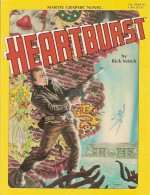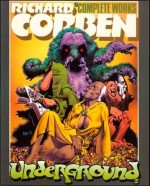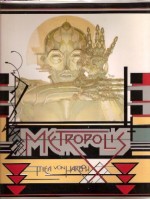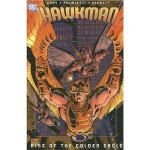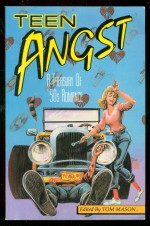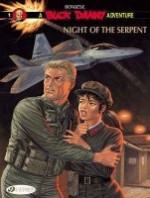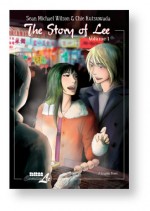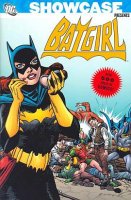
By Gardner Fox, Carmine Infantino, Gil Kane, Don Heck & various (DC Comics)
ISBN: 978-1-4012-1367-1
Today comics readers are pretty used to the vast battalion of Bat-shaped champions infesting Gotham City and its troubled environs, but for the longest time it was just Bruce, Dick and occasionally their borrowed dog Ace keeping crime on the run. However in Detective Comics #233 (July 1956 and three months before the debut of the Flash officially ushered in the Silver Age of American comicbooks) the editorial powers-that-be introduced heiress Kathy Kane, who sporadically suited-up in chiropteran red and yellow for the next eight years.
In Batman #139 (April 1961) her niece Betty started dressing up and acting out as her assistant Batgirl, but when Editor Julie Schwartz took over the Bat-titles in 1964 both ladies unceremoniously disappeared in his root-and-branch overhaul.
In 1966 the Batman TV series took over the planet, but its second season was far less popular and the producers soon saw the commercial sense of adding a glamorous female fighter in the fresh, new tradition of Emma Peel, Honey West and The Girl From U.N.C.L.E. especially when clad in a cute cape, shiny skin-tight body-stocking and go-go boots…
Of course she had to join the comics cast too and this Showcase edition re-presents her varied appearances as both guest-star and headliner in her own series, beginning with her four-colour premiere…
In ‘The Million Dollar Debut of Batgirl’ (Detective Comics #359, cover-dated January 1967) writer Gardner Fox and the art team supreme of Carmine Infantino and Sid Greene introduced young Barbara Gordon, mousy librarian and daughter of the Police Commissioner to the superhero limelight, so by the time the third season began on September 14, 1967, she was well-established.
Whereas in her small screen premiere she pummeled the Penguin, her funnybook origin featured the no-less-ludicrous but at least visually forbidding Killer Moth in a clever, fast-paced yarn involving blackmail and murder that still stands up today and which opens in fine style this long-awaited monochrome celebration of the brief but stellar career of one of the most successful distaff spin-offs in the business.
Her appearances came thick and fast after that initial tale: ‘The True-False Face of Batman’ (Detective #363, by Fox Infantino and Greene) was a full co-starring vehicle as the new girl was challenged to deduce Batman’s secret identity whilst tracking down enigmatic criminal genius Mr. Brains, after which she teamed-up with the Girl of Steel in World’s Finest Comics #169 (September 1967) wherein the uppity lasses seemingly worked to replace Batman and Superman in ‘The Supergirl-Batgirl Plot’; a whimsical fantasy feast from Cary Bates, Curt Swan & George Klein.
Detective #369, illustrated by Infantino and Greene, somewhat reinforced boyhood prejudices about icky girls in the classy thriller ‘Batgirl Breaks Up the Dynamic Duo’ which segued directly into a classic confrontation in Batman #197 as ‘Catwoman sets Her Claws for Batman!’ by Fox, Frank Springer and Greene. This frankly daft tale is most fondly remembered for the classic cover of Batgirl and Catwoman (with Whip!!!) squaring off over Batman’s prone body – comic fans have a psychopathology all their very own…
Gil Kane made his debut on the Dominoed Daredoll (did they really call her that? – yes they did, from page 2 onwards!) in #371′s ‘Batgirl’s Costumed Cut-ups’, a masterpiece of comic-art dynamism that inker Sid Greene could be proud of, but which proffered some rather uncomfortable assertions about female vanity that Gardner Fox probably preferred to forget – and just check out the cover of this tome if you think I’m kidding.
Batgirl next surfaced in Justice League of America #60, February 1968, wherein the team barely survived a return match with alien invader Queen Bee and were temporarily transformed into ‘Winged Warriors of the Immortal Queen!’ (by Fox, Mike Sekowsky & Greene whilst in the June-July The Brave and the Bold (#78) Bob Brown stepped in to draw her in for Bob Haney’s eccentric crime-thriller ‘In the Coils of the Copperhead’ wherein Wonder Woman found herself vying with the fresh young thing for Batman’s affections. Of course it was all a cunning plan… wasn’t it?
That same month another team-up with Supergirl heralded a sea-change in DC’s tone, style and content as the girls were dragged into ‘The Superman-Batman Split!’ (World’s Finest Comics #176) with Bates providing a far darker mystery for the girls and boys (including Robin and Jimmy Olsen) to solve whilst artists Neal Adams & Dick Giordano began revolutionising how comics looked with their moody, exciting hyper-realistic renderings.
Although Barbara Gordon cropped up in the background of occasional Batman adventures that was the last time the masked heroine was seen until Detective Comics #384, (February 1969) when Batgirl finally debuted in her own solo feature. Written by Mike Friedrich and illustrated by the phenomenal team of Gil Kane & Murphy Anderson ‘Tall, Dark. Handsome …and Missing!’ began a run of human-scaled crime dramas with what all the (male) scripters clearly believed was a strong female slant as in this yarn wherein librarian Babs developed a crush on a frequent borrower just before he inexplicably vanished.
Batgirl investigated and ran into a pack of brutal thugs before solving the mystery in the second part, ‘Hunt For the Helpless Hostage!’ (Detective #385), after which the lead story from that issue rather inexplicably follows here.
‘Die Small… Die Big!’ by Robert Kanigher, Bob Brown & Joe Giella is one of the best Batman adventures of the period, with a nameless nonentity sacrificing everything for a man he’s never met, but Babs is only in three panels and never as Batgirl…
Adventure Comics #381 (June 1969) made far better use of her skills as she went undercover and was largely at odds with the Maid of Steel whilst exposing ‘The Supergirl Gang’ in a tense thriller by Bates & Win Mortimer. Batgirl shared the second slot with Robin in alternating adventures, so she next appeared in Detective #388 which welcomed aboard newspaper strip veteran Frank Robbins to script ‘Surprise! This’ll Kill You!’ a sophisticated bait-and-switch caper which saw Batgirl impersonate herself and almost pay with her life for another girl’s crimes. Spectacularly illustrated by Kane & Anderson the strip had expanded from eight to ten pages but that still wasn’t enough and the breathtaking thrills spilled over into a dramatic conclusion in ‘Batgirl’s Bag of Tricks!
Although the tone and times were changing there was still potential to be daft and parochial too, as seen in ‘Batman’s Marriage Trap!’ (Batman #214, by Robbins, Irv Novick & Giella) wherein a wicked Femme Fatale set the unfulfilled spinsters of America on the trail of Gotham’s Most Eligible Bat-chelor (see what I did there? I’ve done it before too and you can’t stop me…). Not even a singular guest-shot by positive role-model Batgirl could redeem this peculiar throwback – although the art rather does…
‘A Clue… Seven-Foot Tall!’ (from Detective #392, October 1969, by Robbins, Kane & Anderson) was another savvy contemporary crime-saga which also introduced a new Bat cast-member in the form of disabled Vietnam veteran and neophyte private eye Jason Bard (who would eventually inherit Batgirl’s spot in Detective Comics). Here and in the concluding ‘Downfall of a Goliath’ Babs and Bard sparred and joined forces to solve a brutal murder in the world of professional basketball.
In issues #396 and 397 (February and March 1970) Batgirl faced the very modern menace of what we’d now call a psycho-sexual serial killer in the chilling and enthralling mystery ‘The Orchid-Crusher’ and ‘The Hollow Man’: a clear proof of the second string character’s true and still untapped potential…
The anniversary Detective #400 (June 1970) finally teamed her with Robin in ‘A Burial For Batgirl!’(Denny O’Neil, Kane & Vince Colletta) a college-based murder mystery that referenced the political and social unrest then plaguing US campuses, but which still found space to be smart and action-packed as well as topical before the chilling conclusion ‘Midnight is the Dying Hour!’ (Detective #401).
With issue #404 Babs became the sole back-up star as Robbins, Kane & Frank Giacoia sampled the underground movie scene with ‘Midnight Doom-Boy’ mischievously spoofing Andy Warhol’s infamous Factory studio in another intriguing murder-plot, diverting to and culminating in another branch of Pop Art as Batgirl nearly became ‘The Living Statue!’
In ‘The Explosive Circle!’ (#406, with Colletta back to ink) the topic du jour was gentrification as property speculation ripped Gotham apart, but not as much as a gang of radical bombers, leading to the cry ‘One of Our Landmarks is Missing!’ The next issue (#408) saw the vastly underrated Don Heck take over as artist, inked here by Dick Giordano on ‘The Phantom Bullfighter!’ wherein a work-trip to Madrid embroiled Batgirl in a contentious dispute between matadors old and new, leading to a murderous ‘Night of the Sharp Horns!’
Inevitably fashion reared its stylish head in a strip with a female lead, but Robbins’ immensely clever ‘Battle of the Three “M’s‒ (that’s mini, midi and maxi to you straights out there) proved to be one of the most compelling and clever tales of the entire run as a trendsetting celebrity found herself the target of an unscrupulous designer, leading to a murderous deathtrap for Babs in ‘Cut… and Run!’ Clearly inspired, Robbins stayed with girlish things for ‘The Head-Splitters!’ (Detective #412) and Heck, now inking himself, rose to the occasion for a truly creepy saga about hairdressing that features one of the nastiest scams and murder methods I’ve ever seen, ending in a climactic ‘Squeeze-Play!’…
Babs reunited with Jason Bard for an anniversary date only to stumble onto an ‘Invitation to Murder!’ (another celebrity homage; this time to Richard Burton and Elizabeth Taylor) – a classy fair-play mystery resolved in ‘Death Shares the Spotlight!’
A cop-killing had torn apart the city and Babs’ father Commissioner Jim Gordon was taking it badly in ‘The Deadly Go-Between!’, but militant radicals weren’t the only threat as seen in the concluding episode ‘A Bullet For Gordon!’, which presaged a far greater role for the once-anodyne authority figure and leading to the character’s integral role in today’s Bat-universe.
Robbins and Heck also revealed a shocking secret about the Commissioner that would build through the remaining Batgirl adventures, beginning with ‘The Kingpin is Dead!’, concerning a “motiveless†hit on an old gang-boss all cleared up in spectacular fashion with ‘Long Live the Kingpin!’ in #419.
‘Target for Mañana!’ saw Babs and her dad travel to Mexico on a narcotics fact-finding mission only to fall foul of a sinister plot in ‘Up Against Three Walls!’ before the series took a landmark turn in ‘The Unmasking of Batgirl’ as a charmer broker her heart and Babs decided to chuck it all in and run for Congress in ‘Candidate For Danger!’
Detective Comics #424 (June 1972) featured ‘Batgirl’s Last Case’ as “Battlin’ Babs†overturned a corrupt political machine and shuffled off to DC, leaving Jason to manage on his own, but that wasn’t quite the end of her adventures. Superman #268 (October 1973) found her battling spies in the Capitol beside the Man of Steel in ‘Wild Week-End in Washington!’ courtesy of Elliot S. Maggin, Curt Swan & Bob Oksner and repeating the experience a year later in ‘Menace of the Energy-Blackmailers!’ (Superman #279, by Maggin, Swan & Phil Zupa.
This eclectic but highly entertaining compendium concludes with one last Supergirl team-up, this time from Superman Family #171 (June/July 1975) wherein a distant descendent of the Empress of the Nile used magic to become ‘Cleopatra, Queen of America’ overwhelming even Superman and the Justice League before the Cape and Cowl Cuties finally lowered the boom…
Batgirl’s early exploits come from and indeed partially shaped an era where women in popular fiction were finally emerging from the marriage-obsessed, ankle-twisting, deferential, fainting hostage-fodder mode that had been their ignoble lot in all media for untold decades. Feminism wasn’t a dirty word or a joke then for the generation of girls who at last got some independent and effective role-models with (metaphorically, at least) balls.
Complex yet uncomplicated, the adventures of Batgirl grew beyond their crassly commercial origins to make a real difference. However these tales are not only significant but drenched in charm and wit; drawn with a gloriously captivating style and panache that still delights and enthralls. This is no girly comic but a full-on thrill ride you can’t afford to ignore…
© 1967-1975, 2007 DC Comics. All Rights Reserved.


